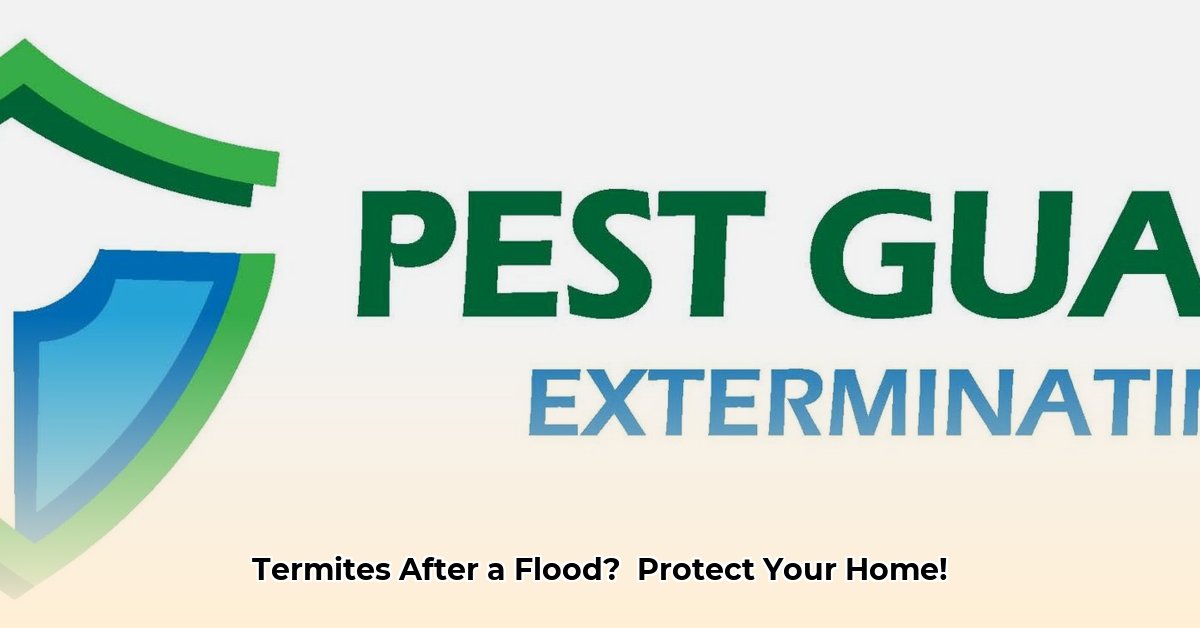
Floods cause devastation, but the hidden threat of post-flood termite damage can be even more insidious. Waterlogged wood is a termite buffet, leading to costly repairs and structural weakening. This guide provides a step-by-step plan for homeowners, pest control companies, insurance providers, and government agencies to mitigate this risk.
Understanding Post-Flood Termite Risks
Flooding disrupts your home's termite defenses in several ways. Waterlogged soil weakens liquid barriers, saltwater contaminates bait stations, and damp wood becomes an irresistible breeding ground. Has your termite protection system been checked lately? It's critical to act quickly.
Assessing the Damage: A Step-by-Step Action Plan
After floodwaters recede, a thorough inspection is paramount. Here's a detailed action plan:
- Thorough Inspection: Carefully examine your entire termite protection system, including bait stations, liquid barriers, and all wood for signs of swelling, discoloration, or softness—indicators of water damage. Don’t miss a single area.
- Documentation: Take extensive photos and detailed notes of all damage. This documentation is essential for insurance claims.
- Professional Consultation: Contact a licensed pest control professional for an accurate assessment and repair recommendations. Immediate action is crucial.
- Repairs and Remediation: Based on the professional's assessment, replace damaged bait stations, reapply liquid barriers, and repair or replace water-damaged wood.
- Long-Term Prevention: Discuss long-term prevention strategies with your pest control professional, including improved drainage and foundation modifications. Proactive measures save money in the long run.
Stakeholder Actions: A Collaborative Approach
Effective post-flood termite protection requires a coordinated effort from various stakeholders:
| Stakeholder | Short-Term Actions | Long-Term Actions |
|---|---|---|
| Homeowners/Businesses | Inspect for damage, initiate repairs, remove severely waterlogged wood. | Mitigate future flood risks (improved drainage, landscaping), consider multiple termite protection methods. |
| Pest Control Companies | Develop post-flood inspection protocols, offer specialized repairs. | Invest in flood-resistant termite control technologies, advocate for better insurance coverage for flood damage. |
| Insurance Providers | Evaluate flood risk when setting premiums, consider specific termite damage coverage. | Develop better actuarial models to account for flood-related termite damage. |
| Government Agencies | Improve flood warning systems, educate the public on post-flood termite risks. | Invest in infrastructure improvements to reduce flood risk and update building codes for flood resilience. |
Risk Assessment Matrix: Understanding Vulnerabilities
Flooding poses varying risks to different termite protection methods:
| System/Technology | Flood Risk | Saltwater Risk | Repair Cost | Notes |
|---|---|---|---|---|
| Liquid Termite Barriers | High | Medium | Medium | Effectiveness significantly reduced; may require complete reapplication. |
| Bait Stations | High | High | Medium | Can be damaged or rendered ineffective. |
| Wooden Structures | High | Medium | High | Water-damaged wood is extremely susceptible to termite infestation. |
| Crawl Space Treatments | High | Medium | Medium to High | Treatments may be washed away; require re-treatment and potentially extensive repairs. |
How to Repair Termite Damage After a Flood: A Detailed Guide
Repairs require a professional approach. Why risk further damage with DIY methods?
Key Takeaways:
- Post-flood conditions are ideal for termites.
- Immediate action minimizes long-term damage and costs.
- Professional assessment is crucial for effective treatment.
- Repair involves structural repairs and targeted pest control.
- Preventative measures are vital.
The Repair Process: Step-by-Step
- Professional Inspection: A licensed pest control professional will accurately assess the extent of damage and create a tailored plan.
- Water Damage Mitigation: Thoroughly dry the affected area to prevent mold and further termite activity.
- Termite Treatment: The professional will apply appropriate termite treatments to eliminate existing infestations and prevent recurrence.
- Structural Repairs: Replace damaged wood, reinforce weakened sections, and repair drywall or flooring.
- Preventative Measures: Implement long-term preventative measures, including moisture barriers and improved ventilation.
DIY vs. Professional: A Realistic Comparison
| Feature | DIY | Professional |
|---|---|---|
| Cost | Lower upfront cost, but potentially higher long-term costs | Higher upfront cost, but often lower long-term costs |
| Effectiveness | Limited; ineffective for serious infestations | High effectiveness, addresses hidden damage |
| Time Commitment | Time-consuming, requiring expertise | Efficient, reduces project timeline |
| Safety | Potential exposure to hazardous materials | Safe, trained professionals |
| Long-Term Solutions | Often insufficient; recurring infestations likely | Comprehensive, reduces future infestation risk |
Ignoring professional assistance can lead to recurring problems and significantly higher costs. Act promptly to protect your home and investment.